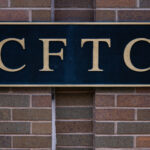U.S. aerospace project Helios Horizon has reportedly broken the record for the highest-flying multi-seat electric aircraft.
Helios Horizon reported that the company’s recent test campaign near Bishop, California, saw their all-electric aircraft achieve altitudes between 17,500ft and 24,000ft. Impressively, these flights used only up to 60% of the aircraft’s total battery capacity. In line with global efforts to reduce our carbon footprint, such developments in electric air flight are being closely watched.
The project’s announcement appears to bring us one step closer to a new era for electric aviation technology, offering both challenges and opportunities for aviation insurers.

New developments
One of the major challenges for the advancement of electric flights is finding battery power that is both suitable and lightweight. Currently, while the use of electric power in aviation is on the rise, the emphasis has been on smaller or unmanned aircraft, or hybrid systems in commercial aviation.
Aviation batteries need to store a vast amount of energy and discharge it at a rate that is sufficient to power an aircraft while remaining lightweight.
Helios Horizon’s aircraft is said to have been have been designed around the airframe of a two-seat microlight glider, with the build incorporating “unique systems for power delivery, battery management, propulsion and thermodynamic control.”
Helios Horizon is not the only entity innovating on this emerging area. NASA has reported significant progress with developing the Solid-state Architecture Batteries for Enhanced Rechargeability and Safety, an innovative battery pack that is lighter, safer, and performs better than batteries commonly used in vehicles today.
Moreover, the emerging sector of Urban Air Mobility involves low-altitude, ultra-short-distance Vertical Take-Off & Landing flights in urban areas. It is expected that this sector will see the most significant shift towards electric power in the short term. This multi-billion-dollar industry is growing rapidly and is well-suited to the capabilities of current battery technologies.
Impact on aviation insurance claims
New technologies are often expensive initially, which can drive up insurance claim costs. As technology evolves and parts become more complex, the costs of repairs and replacements are likely to increase. For instance, the adoption of composite materials in the latest generation of aircraft changed repair methods entirely. Initially, these materials were unfamiliar and complex for third-party repair organizations, leading to manufacturers having a near-monopoly on new material repairs and affecting the spares market, ultimately increasing costs.
Electric general aviation aircraft would still require shockload inspections for propeller strikes, and the increased reliance on battery systems could result in more thermal runaway events, causing damage to the aircraft.
Another potential challenge for insurance claims is the theft and off-aircraft damage to battery systems. The Urban Air Mobility model partially relies on the concept of a quick disconnect system, allowing a depleted battery to be swapped with a freshly charged one for quick turnarounds. This practice, although operationally sound, could lead to increased handling damages, multiple connection cycles, and theft occurrences of these expensive parts.
There are also similarities to the drone market. As drone use and technology have evolved, regulators have developed clearer frameworks for their use. The insurance market has created more sophisticated products through regular dialogue between loss adjusters, brokers, and underwriters. With the proliferation of drone usage, the industry has gained a clearer understanding of the risk profile, including issues such as loss of signal, loss of battery power, bird strikes, and pilot error.
Southall is a senior aviation surveyor at McLarens Aviation.
Was this article valuable?
Here are more articles you may enjoy.

 Nearly 24 Firms Seek Deal With CFTC to Settle Enforcement Cases
Nearly 24 Firms Seek Deal With CFTC to Settle Enforcement Cases  UAW Joins Critics Slamming RFK Jr.’s Cuts to Worker Safety Unit
UAW Joins Critics Slamming RFK Jr.’s Cuts to Worker Safety Unit  Inspections of Affected Barrels Will Take Time as Flood Cleanup Progresses at Kentucky Distillery
Inspections of Affected Barrels Will Take Time as Flood Cleanup Progresses at Kentucky Distillery  Jack Dorsey’s Block to Pay New York $40 Million in Cash App Settlement
Jack Dorsey’s Block to Pay New York $40 Million in Cash App Settlement 